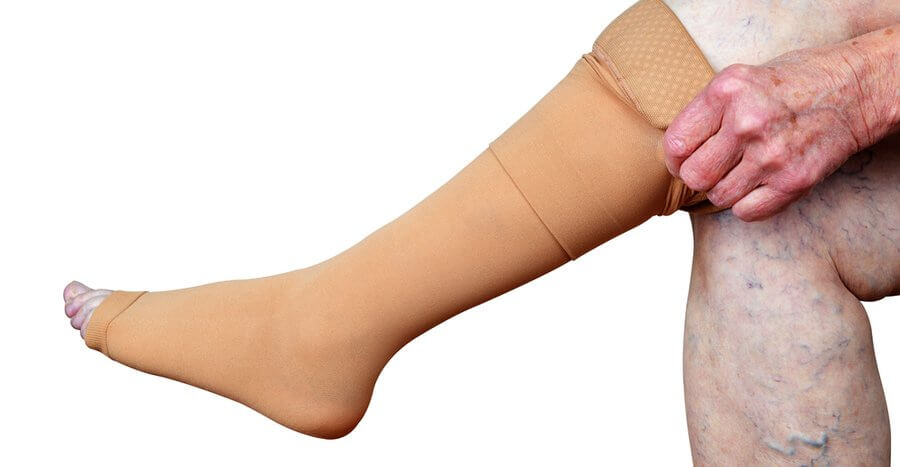Compression stockings help you gently improve blood flow up your legs, which reduces swelling and even reduces the risk of blood clots. By improving circulation in your legs, these socks can help prevent serious medical conditions, improve sports performance and ease any pain or discomfort you may be feeling daily.
Since they come in varied sizes and compression strengths, it can be confusing to figure out which ones you need to start with. If you find yourself wondering which compression stocking to choose, this is the guide for you.
1. Figure out the strength
Compression strength is measured in mmHg – the lower the number the less it compresses, and vice versa.
The scale of compression strength goes from 8-15 mmHg at the lowest compression level, to 40-50 mmHg at the highest.
Most of the stronger compression stockings, such as graduated compression stockings require a medical expert’s recommendation before you can buy them. In that case, you will already know the necessary strength. Otherwise, a moderate to firm compression level, with 15-30 mmHg is recommended to buy, depending on your needs and preferences.
2. Sock, stocking, or sleeve?
The main difference is the area covered – a sock stops below the knee, meanwhile thigh-high compression stockings will cover your whole leg. Depending on your comfort levels wearing compression material on your legs, as well as the area which is most affected (such as having spider veins only on your feet), your choice will change.
A sleeve, on the other hand, will leave your toes free and mobile – this is a useful choice if you prefer having the added foot mobility in your toes.
There is a special kind of stocking, of a waist-high size, often referred to as maternity stockings. It differs from the thigh-high stocking by having an easily expandable area around the belly.
3. Style
It is no secret that compression stockings for women will offer slightly different options than the choices available for men. For instance, women’s stockings will typically offer lighter, more sheer fabric styles to choose from, while men’s will tend towards more robust, opaque, or durable alternatives.
When considering the style, remember that each fabric comes with its benefits. Opaque variants tend to be overall more comfortable, easy to wear, and offer a stronger compression effect.
Sheer fabric will be lighter, more transparent, and therefore fashionable. However, that sometimes means they’re easier to tear and provide less efficient compression.
4. Wearing them right
Make sure the stockings you choose will be easy to wear. Ensure there is no bunching, as that can hurt your blood flow. Don’t try to wear a knee-high compression stocking as a thigh-high one, otherwise, you risk them being too tight, tearing, among other things.
In short: use them as regular stockings, while keeping in mind that they are still a medical utility. If you’re experiencing discomfort, discoloration of the toes or affected areas, stop wearing them and contact a medical professional.
Over-the-counter compression stockings are unlikely to ever pose a threat and will alleviate any discomfort you may feel in your feet after a long day’s work. Barring unusual circumstances, such as sleeping in your compression stockings they can be worn most of the time.
The health benefits, besides improved blood flow and reduced discomfort, include preventing the appearance of new spider or varicose veins. It can be a helpful addition to ongoing procedures and is often recommended by vein clinics across the world. To find the right treatment options for your veins, all you need is the advice of a trusted medical professional with years of experience from a vein clinic near you.




